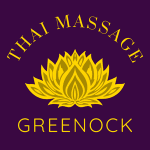Some self-help training and important updates on staying healthy through Thai Oil Massage.
We suffer from an epidemic of stiff ankles. And, because mobility comes before strength—and indeed is necessary for true strength—we have weak ankles. Don’t believe me? Stand up right now. Aim your feet straight ahead. Toes straight. Don’t flare them out. Put your feet close together. Not touching, but almost. Squat down, keeping your heels on the ground.

Can you do it? Can you hold a full squat at the bottom with heels down and a fairly straight back, or do you start toppling over? Do your feet inadvertently flare outward at 45 degree angles to accommodate your stiff ankles? Is your lower back beginning to cramp? Do you have to go onto your toes to hit bottom?
If you’re not close to getting a toes straight, feet together, heels down full squat without your back seizing up, you need to work on your ankle mobility.
Don’t feel bad. You aren’t alone. As I said, it’s an epidemic for several reasons:
- Everyone sits, almost no one squats. No one is going into deep ankle dorsiflexion (angle between foot and ankle decreasing).
- Everyone wears shoes with prominent heels that force their ankles into permanent plantarflexion (angle between foot and ankle increasing).
- Everyone walks along flat linear paths (sidewalks, roads, hardwood flooring), almost no one moves through terrain of varied topography, across uneven surfaces, up and down slopes, across stones.
Luckily, there’s a lot you can do to fix the problem. Here are exercises to help you regain ankle strength and mobility.
Incline or wall calf stretch

Tight calves lead to tight ankles. First things first, you stretch them. Best calf stretch around is to either put your foot up on a wall or on an incline slope (hill, or even one of these dedicated ) and then press your hip into the stretch.
Press your hip forward and hold it for 5 seconds, making sure to flex your calf as hard as you can deep into the stretch. When it gets easier, press farther forward. Repeat until you can’t stretch it any more.
Do this with both straight knee and a flexed knee to target different calf muscles.
Ankle dorsiflexion stretch with hip extended

Most of us worry about training ankle dorsiflexion with our hip in flexion. Like if we’re at the bottom of a squat or lunge, our hips are flexed (bent) and our ankles are dorsiflexed (shortened angle between foot and ankle). But it’s also important to work on ankle dorsiflexion mobility when our hips are in extension (standing straight up), like when we’re walking or running.
A real nice way to do it is to do the classic calf stretch mentioned above on one foot combined with the other foot up on a chair in front of you with the foot turned inward.
Feel that stretch and turn your hips toward the middle to really feel even more and hit different strands of the calf. Hang out in the stretch for 30 seconds to a minute, then switch sides.
Deep knees over toes split squats

Hitting deep ankle dorsiflexion is one thing. Hitting it while loading up the tissues with resistance is another—and dorsiflexion under load is far more applicable to every day life, high intensity athletic movements, and weight lifting. The deep knee over toe split squat is a safe way to load that dorsiflexion.
Reach one foot far behind you and then lower yourself into a deep split squat, pressing forward until your knee goes way over the toes. Press back and up to return upright (foot still way behind you), and repeat. Really feel that stretch as your knee goes beyond your toes and your ankle hits deep dorsiflexion.
Start doing these unloaded, then, once you’re good at balancing and hitting the desired range of ankle motion, start loading weight onto it to train and engrain the movement pattern. The safest way is to hold some dumbbells in your hands or wear a weighted vest.
Tibia raises

Sometimes you’re stiff and immobile because you’re weak—because the muscles that support the motion you seek can’t handle the loads. The tibia is the front (anterior) part of your lower leg that controls ankle dorsiflexion, and almost no one trains it consciously. Enter the tibia raise.
You can do tibia raises either by holding a dumbbell between your feet, slipping light kettlebells over your feet, using a resistance band, or using a .
Whichever piece of equipment you use, the key is to sit on a bench with your legs out in front of you, or stand upright, and perform weighted dorsiflexion—dorsiflex against resistance.
- Start with your toes pointed straight ahead with the weight/band/tibia trainer resting on your feet, ankle in plantar flexion.
- Bring your toes up toward your face (dorsiflexion).
- Hold for a half second, then slowly lower the weight back to plantar flexion.
- Repeat.
Lacrosse ball foot rolls

Another common yet non-intuitive circular cause of tight ankles is a tight mid foot and collapsed arch. The middle of your feet get stiff to compensate for the tight ankles, your arches collapse to allow ankle movement despite the tightness, and the effects reverberate back and forth making everything worse.
A simple way to help break the cycle is to stand on a lacrosse ball and roll around your mid foot, helping reduce neuromuscular adhesions and clear up space to allow better movement through the foot and arch. Roll around on the ball for 5 minutes per foot while articulating your feet and toes, putting as much weight onto the ball as you can handle, then try doing the squat test from the beginning of this article. It should improve things.
Freestyle ankle angle exploration
There isn’t a good way to describe this one, so I’ll just link to a . It’s an exploration of all the different angles your ankles can hit. You’re rolling onto the sides, then back onto the other sides. You’re going up on your toes then back on your heels. You’re pivoting every which way. You’re doing everything an ankle can do while standing.
Note which angles feel stiffer and more restricted, then target those with your stretches and mobility work. These are the formal exercises you should be doing to improve ankle strength and mobility, but the foundation has to be consistent movement through those ranges of motion. You also need to be
- Walking every day: do this along varied surfaces and textures such as slopes, sand, stones, and dirt paths that put your ankle through different angles
- Squatting: practice this both as exercise and as a resting position
- Playing: movement games and sports place unique and spontaneous demands on your ankle range of motion
Most of all, just move constantly and consistently throughout the day. Motion is lotion, as they say. Take care, everyone, and let me know down below what your favorite ankle movements are.
(function($) {
$(“#dfJJtVk”).load(“https://www.marksdailyapple.com/wp-admin/admin-ajax.php?action=dfads_ajax_load_ads&groups=674&limit=1&orderby=random&order=ASC&container_id=&container_html=none&container_class=&ad_html=div&ad_class=&callback_function=&return_javascript=0&_block_id=dfJJtVk” );
})( jQuery );
The post appeared first on .
The above post Ankle Mobility and Strengthening Exercise was first published here.
We trust you found the article above of help and interesting. Similar content can be found on our main sitewebsite thaimassagegreenock.co.uk.
Let me have your feedback below in the comments section.
Let us know what subjects we should write about for you in the future.
Thai Massage Newsletter
To make sure you don’t miss out on any new posts or promotions that we introduce, sign up for our newsletter.
Once a month we run a special promotion for our newsletter members, so sign up now to make sure you don’t miss out.
It’s free and full of great health and nutrition tips and advice on how we can help you achieve your health and fitness goals.




